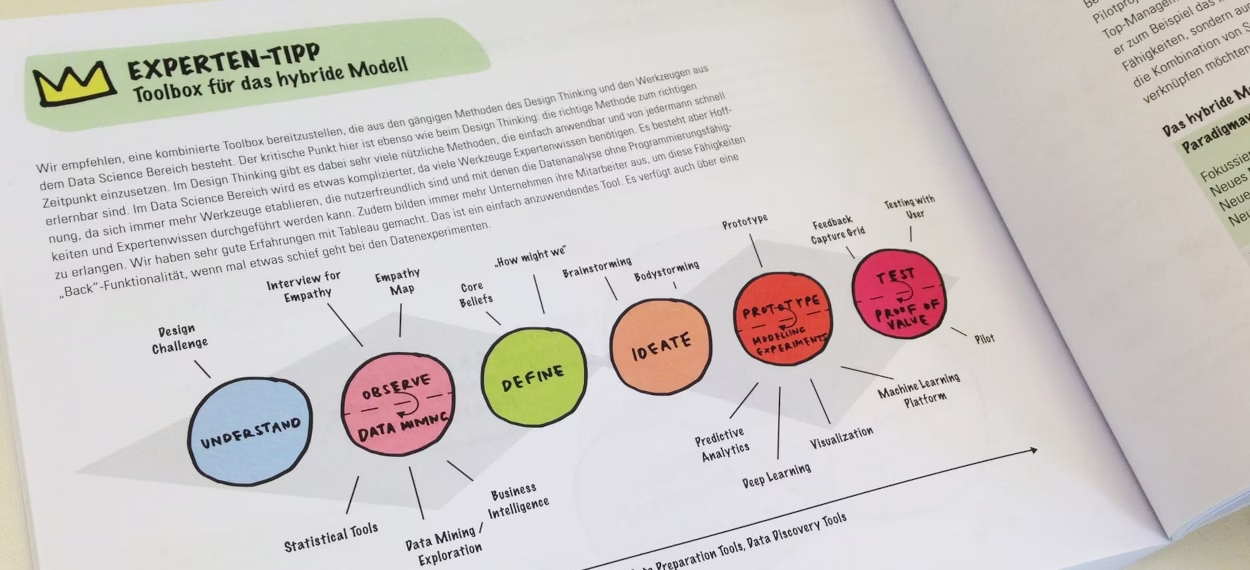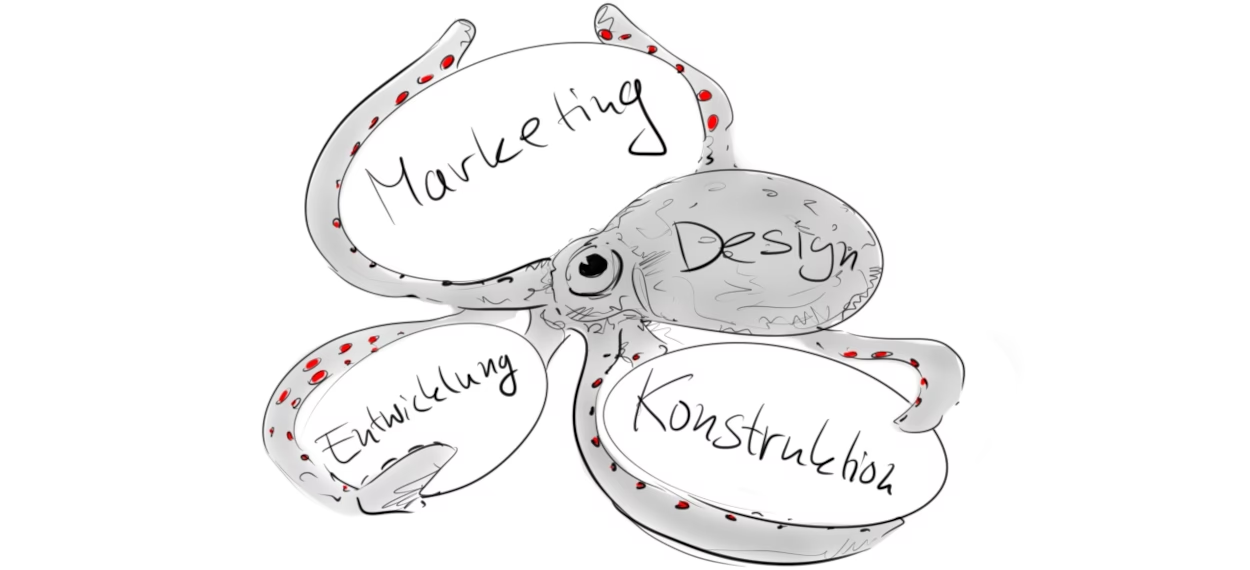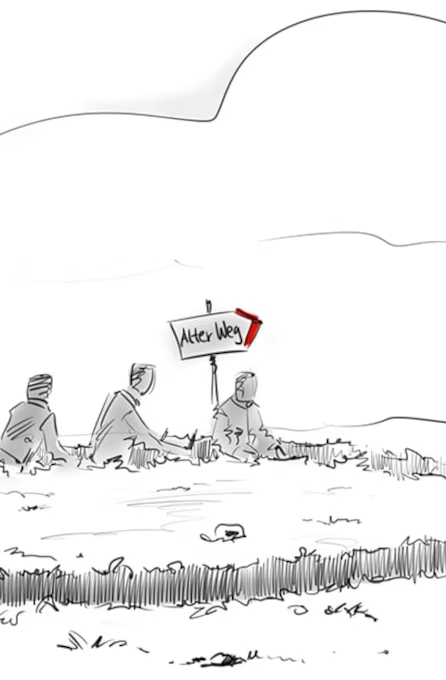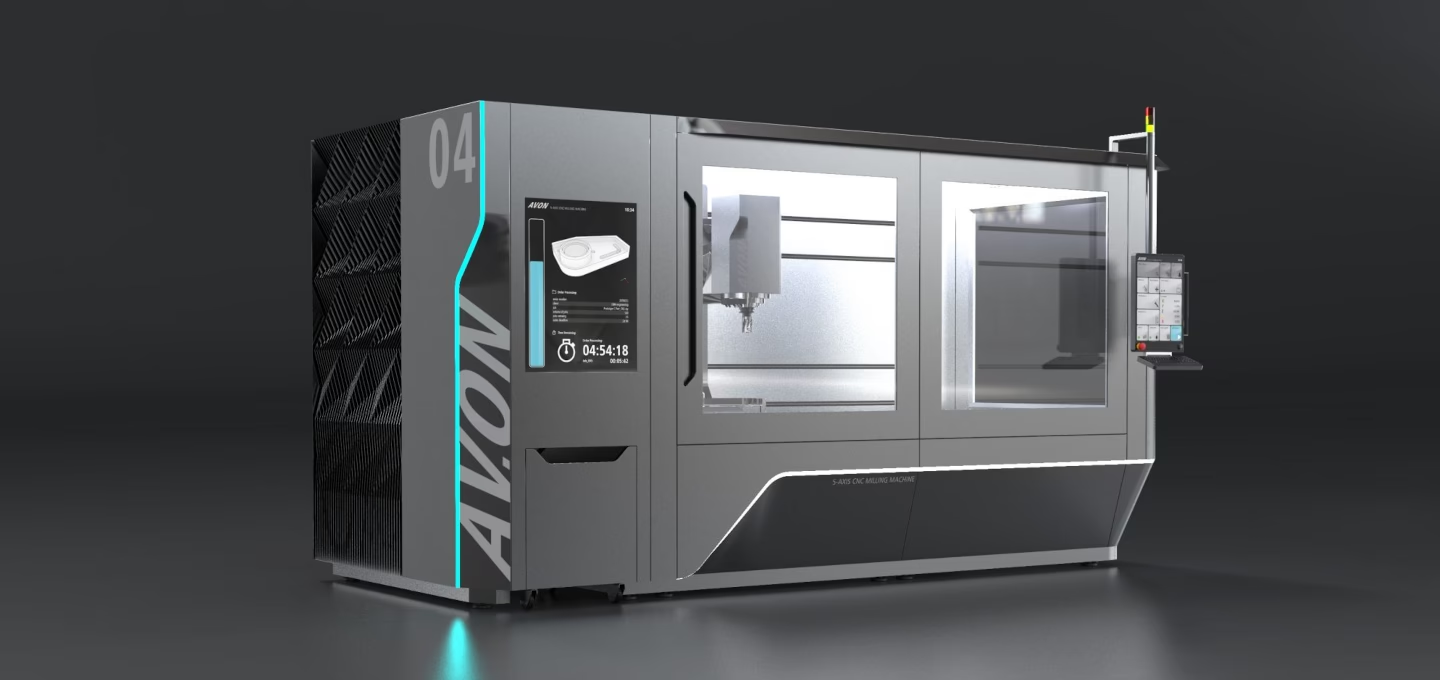How Industrial Designers Use Design Thinking for Successful Product Development
Design thinking is considered the creative trend method for innovation development. As industrial designers, we occasionally wonder about the hype that has grown around this approach, because the methods and mindsets are by no means newly invented, but rather an integral part of our daily work in product development.
Design thinking product development is lived practice for us. Our defined goal: to deliver you as a customer the best possible product.
To create helpful and meaningful solutions for users, it is essential to adopt the user perspective. To fully understand, you must experience yourself – that is, try out, touch, fail, and ultimately improve. The goal of design thinking product development is primarily to create solutions that satisfy user needs while also being sensible, economically viable, and technically feasible.
The more intensively we engage with defining the problem, the better solutions we can deliver.

What Design Thinking Means
The basic idea of design thinking is to create innovations and creative solutions for complex problems.
There are no limits to its scope of application. Design thinking can be applied to physical products and services as well as to developing concepts for business or societal questions.
Method and Mindset Combined
Design thinking is both a collection of methods and a mindset, and can be defined differently depending on the application. Various techniques and tools can be used for systematic procedures.
Open-mindedness to results, allowing for mistakes, the courage to fail, and the willingness to learn from failure form the required inner attitude.
The Two Main Phases: Analysis and Synthesis
The classic design thinking process is divided into two main phases: analysis and synthesis.
The two main phases can be subdivided into six further sections: understand, observe, define point of view, find ideas, develop prototype, and test.
It's important to emphasize that this is by no means a linear process, and iteration loops within the phases are an integral part of design thinking product development.
The 6 Phases of Design Thinking
Phase 1 & 2: Understand and Observe
Through asking questions and listening, a fundamental understanding is created. In design thinking, everything begins with deep immersion in the problem statement.
Organizing and evaluating observations helps define the problem as precisely as possible. The most important insights form the starting point for possible solutions.
Phase 3: Define Point of View
The gained insights are condensed and the point of view is clearly defined. For product development, this focus is crucial: Which problem are we solving exactly? For whom? Why is it relevant?
Phase 4 & 5: Develop Ideas and Build Prototypes
Based on this, initial ideas and solution approaches are developed. These are tested thoroughly using prototypes to detect and revise weaknesses as early as possible in the development process.
"FAIL OFTEN AND EARLY" is one of the guiding principles of design thinking here.
Phase 6: Test and Iterate
The phases are repeated until satisfactory solutions are found. Test, learn, improve – this iterative approach is the heart of design thinking.

The User-Centered Approach
The most important motivation of design thinking is always to gain a profound understanding of the user's needs and desires. In this way, one's own perspective changes and focus is sharpened.
As a result, the probability of developing sustainable solutions is incomparably greater than with solutions that are made palatable to users through expensive marketing. Design thinking is a good way to gain distance from familiar systems and dare to leave well-worn paths to generate novel solutions.
Linking Design Thinking Principles with Industrial Design
Design thinking methods are lived practice for us industrial designers. In product development, numerous aspects come together. These concern both user and customer needs as well as manufacturing-related requirements that must also be considered in an economic context.
Strategic and Systematic Approach
To maintain overview of such multifaceted overall contexts, strategic as well as systematic approaches are absolutely necessary.
Design is often mistakenly equated with final styling. We, however, understand product design as a holistic task. Using creative techniques, we develop innovative concepts and solve problems in a targeted manner – exactly as design thinking envisions.
Interdisciplinary Collaboration
The earlier in the process the entire development team comes together with us industrial designers, the better solutions emerge. In interdisciplinary teams, there is the opportunity to view questions from different perspectives and thus produce holistic answers.
This is a core principle of design thinking in product design: bringing together different expertise to achieve optimal results.

Our Design Process in Product Development
The classic design process largely corresponds to the design thinking workflow, equally for new development and optimization of existing products.
We distinguish four main phases:
- Research: Understand and observe
- Conception: Define point of view and develop ideas
- Design: Create prototypes
- Elaboration: Test and finalize
Phase 1: Research and Analysis
The starting point of every design project is the research and analysis phase. Together with our client, the most important goals and requirements are established in the briefing.
Research provides comprehensive knowledge about markets, current trends, users, and target groups. Analyses give us insights into structures, needs, processes, ergonomics, utilities, and overarching contexts such as company structure and goals.
This phase corresponds to the first two steps of design thinking: understand and observe.
Phase 2: Conception
On this foundation, principal design solutions are developed in the form of individual and partial concepts. Taking into account the insights gained in the first phase, the concepts can be consolidated and evaluated.
Evaluation occurs based on the following criteria:
- Design: Does the solution meet aesthetic and functional requirements?
- Function: Does it really solve the problem?
- Manufacturing technology: Is it technically producible?
- Economic viability: Is it realizable within the cost framework?
Phase 3: Design and Prototyping
In constant consultation with the client, one or more concepts are pursued and elaborated. This typically occurs through drawings, 3D CAD construction, mock-ups, and testable prototypes – with constant feedback from customers and the development team.
Prototyping is a central element of design thinking product development. Early, simple prototypes enable quick feedback and iteration.
Phase 4: Elaboration and Production Support
Through multiple reviews and revisions, the concept becomes a design and the design becomes the final product. The last step is then the transfer of data to manufacturers for tooling and production.
Production support is part of our work. Only when the product is successfully in the market is the process complete.
Design Thinking in Industrial Design: The Toolbox Approach
Based on our many years of experience as industrial designers, we appreciate the methods of design thinking. Comparable to a toolbox, there is a suitable tool for every challenge.
The great advantage is that procedures can always be adapted to current needs and circumstances. Design thinking is not a rigid method but a flexible framework.
Mindset Matters
Design thinking product development is primarily an inner attitude and less a strict methodological template to be dogmatically adhered to and that could be applied to every problem as a solution approach.
It's about openness to new perspectives, willingness to experiment, and acceptance that the path to the goal is not always linear.
Developing and Optimizing Products with Expert Workshops and Design Thinking
In our workshops, the power of design thinking becomes particularly evident. There it is important to respond adequately to the current situation. This motivates participants and helps develop qualitative results.
Case Study: Interdisciplinary Workshop for Product Optimization
In our expert workshop, we bring together specialists from various disciplines to find potential for product optimization. The team consists – depending on the thematic focus – of engineers, architects, and industrial designers.
We work together as well as in small groups to create the greatest possible output. In this way, the question can be examined both in the overall context and in detail – entirely in the spirit of design thinking product development.
Fast, Concrete Results
In a short time, improvements in construction, mechanics, materials, and handling as well as completely new conceptual approaches for the product's function can be developed – an ideal start for all further work phases.
The combination of structured process and creative freedom makes design thinking so effective in workshops. Bringing different perspectives together creates synergies that would never emerge in isolated departments.
The Added Value of Design Thinking for Your Company
The added value of the collection of methods, principles, and mindsets lies in the open-ended and solution-oriented approach to problems. Integrated from the beginning, goal definitions can be efficiently developed and thus contribute to supporting the strategic direction of your projects.
Strategic Integration into Your Company
The higher the corporate levels at which these design thinking principles find acceptance, the more effective their application becomes.
Design thinking is not just a method for designers – it is an approach that can and should permeate the entire company. From product development to marketing to strategy development.
Responsibility for Sustainable Solutions
We bear responsibility for the results of our work, because as real existing products, they influence our immediate environment. Success is only visible in the future. Intensive and sustainable engagement in advance – as design thinking product development demands – creates security in the decision-making process.
Our Vision of Good Industrial Design
As designers, design thinking supports us in realizing our vision of good industrial design. We value creating the best possible products for you as customers that are useful and bring joy.
The methods help us work systematically and creatively at the same time. Structure and creativity are not opposites – they complement each other perfectly.
Conclusion: Design Thinking Product Development as a Success Factor
Design thinking is far more than a trend – it is a proven working method that we as industrial designers have practiced for years. The systematic, user-centered approach leads to products that solve real problems and are successful in the market.
The combination of structured process, iterative approach, and interdisciplinary collaboration makes design thinking a powerful tool for innovation.
Whether new development or optimization of existing products – the principles of design thinking lead to better results: products that inspire users, are economically feasible, and differentiate your company in competition.
Further Resources
For a deeper introduction to the methods, we recommend "The Design Thinking Playbook" by Michael Lewrick, Patrick Link, and Larry Leifer. It offers a comprehensive collection of various methods and techniques of design thinking product development and regularly serves as a source of inspiration for our workshops.
Your Product Development with Design Thinking
Would you like to conduct a workshop or start a product development project?
We are happy to be there for you and look forward to getting to know you.
Use our contact form or call us personally – we provide free consultation on the possibilities of design thinking product development for your company.









